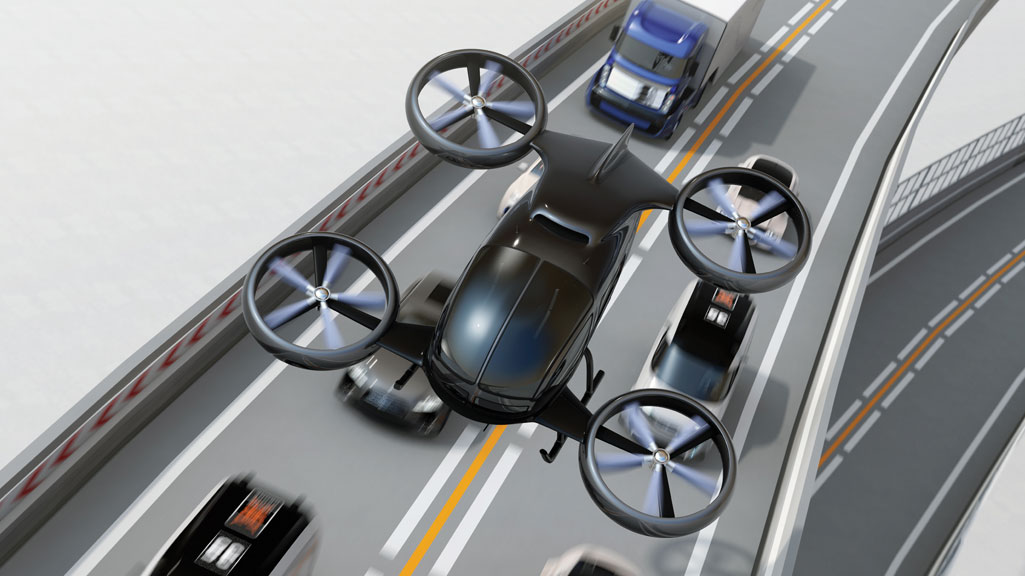When considering the challenges of realizing the goal of flying taxis and personal commuting aircraft, thoughts of airspace management, aircraft certification and operational safety may immediately spring to mind.

Critical to the success of this nascent industry, however, will be adequate ground infrastructure to support the ambitions of an increasing number of Urban Air Mobility (UAM) visionaries. How best to create a successful network of urban and suburban vertiports raises many questions and engineering challenges that will need to be addressed before this new aviation vertical can flourish.
Who Will Develop Vertiports?
Most airports around the world are owned by federal or local governments. And while many private companies deliver fuel and food, provide security and perform a myriad of other functions, the vast investment needed to develop airports is principally provided through public finance.
The question is whether those same central or local government agencies will step up to fund a network of potentially very expensive hubs to allow UAM to develop. Many are skeptical, especially based on their assumption that, in the early years at least, electric-powered air taxis will be exclusively used by only the most affluent passengers.
If the private sector steps up, one of the questions observers frequently ask is whether the facilities for docking and charging will be agnostic to a variety of aircraft. A scenario similar to the auto industry, where Tesla has developed an exclusive network of charging stations, would require several independent vertiports in the same downtown location.
That seems both illogical and highly unlikely to succeed. Private or public sponsors of vertiports, in addition to regional planning authorities, will likely insist on a support network able to manage several different aircraft types. The answer may be partnerships, where publicly owned vertiports are financed in part via long-term leases to private Fixed Based Operators (FBOs) and UAM operators. Regardless of how funding is derived, many issues will need to be addressed to ensure the futuristic graphic designs familiar to UAM company websites become reality.
Where Will Vertiports Be Built?
Location optimization will require the best proximity to the passenger’s departure and arrival points. In general, maximizing efficiencies for passengers will require that at least one be in, or very near to, a city center. To facilitate aircraft routing and general safety, the ideal location would be free of large buildings, using either a waterfront location or one that has the space to create safe approach and departure flight paths.
Another key consideration is access to electricity. While charging a handful of electric Vertical Take-Off and Landing vehicles (eVTOLs) at a time can be achieved with relatively normal power supplies from the grid, a vertiport designed to recharge a dozen or more aircraft may require its own substation.
While some may see rooftops as the perfect solution, the higher cost of developing passenger and charging facilities far above ground level, not to mention gaining approval from the relevant authorities, may make roofs an unachievable target.
Before ground is broken on potential sites, a couple of fundamentals will need to be established. Primary among them will be a complete understanding of the specifications required by the operators. Charging requirements will be one of the key items, along with aircraft size, passenger numbers, adjacent ground transportation and more.
The other will be approval from regulators around the world. In the U.S., the Federal Aviation Administration (FAA) issued its UAM Concept of Operations (ConOps) document in June 2020. It suggests a gradual approach to UAM integration from many perspectives, including where vertiports, or “UAM Aerodromes,” the term they prefer, may be sited. The FAA expects to develop a vertiport standard in the coming years that would likely tackle charging facilities among a long set of measures and criterions.
AAM as the Blueprint
Interestingly, the FAA makes a distinction between Advanced Air Mobility (AAM) and UAM, with the former describing cargo and longer-range passenger services. AAM operations can be expected to have an easier path to commercial realization, given their proposed operations in less populous areas, and may ultimately provide the blueprint to fully urbanize UAM.
Perhaps of greater importance, however, will be the role that less urban-centric, electric-powered flight services perform in establishing the viability of a UAM network. This includes gaining the support of the neighborhoods where UAM operations occur. If broad acceptance is to be achieved, a balance will need to be found where communities see and experience the benefit of UAM to counter any hesitancy about safety, noise or financial strain.
A crawl-walk-run approach may be beneficial from many perspectives. The investment needed to develop inner-city infrastructure may be easier to justify once the business and safety cases have been demonstrated in less populous areas, and once original equipment manufacturers (OEMs) have been able to build the size of fleets necessary to create the need.
What is clear is that the desire, funding and ambition exists, from major OEMs and start-ups alike, to develop a new market for flight services—one that is based on creating efficiencies in an environmentally conscious way. Once all the other pieces of the jigsaw puzzle fall into place, and the benefits of UAM are validated, the framework for ground services needed to see UAM flourish should follow with relative ease.